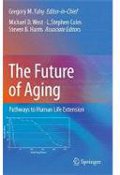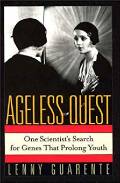Matt Kaeberlein et al. propose that the TOR and Sch9 kinases regulate longevity in yeast
 Who:Matt Kaeberlein, R. Wilson Powers III, Kristan K. Steffen, Eric A. Westman, Di Hu, Nick Dang, Emily O. Kerr, Kathryn T. Kirkland, Stanley Fields, Brian K. Kennedy
Who:Matt Kaeberlein, R. Wilson Powers III, Kristan K. Steffen, Eric A. Westman, Di Hu, Nick Dang, Emily O. Kerr, Kathryn T. Kirkland, Stanley Fields, Brian K. KennedyWhen:November 18, 2005
Methods: Large-scale analysis of 564 gene deletions which yielded 6 genes corresponding to the TOR and Sch9 pathways
Funding: National Institutes of Health
In 2005 Kaeberlein et al. published a paper suggesting that the mechanism for calorie restriction is via the TOR1 Sch9 pathways, independent of the Sir2 pathway.
Kaeberlein et al. reached their conclusion via analysis 564 gene deletion strains of yeast. The strains were then classified as follows:
- Mean life span less than 20 generations are short lived (SL)
- Mean life span less than 26 generations are not long lived (NLL)
- Mean life span more than 36 generations are long lived (LL)
The resultant deletion strains showed that decreased expression of TOR1, protein kinase A (PKA), and Sch9 all increased replicative life-span. TOR1 is thought to run upstream and parallel to PKA and Sch9. All three mechanisms regulate common downstream targets such as ribosomal proteins Rp131a and Rp16b.
Since it has been shown that orthologs of TOR1 and Sch9 in Caenorhabditis
elegans and Drosophila melanogaster regulate lifespan, the authors conclude that the reduced activity of TOR1 and Sch9 presents "a model whereby CR increases life span
through a highly conserved, Sir2-independent
signaling network from nutrients to ribosomes."
References
Links




